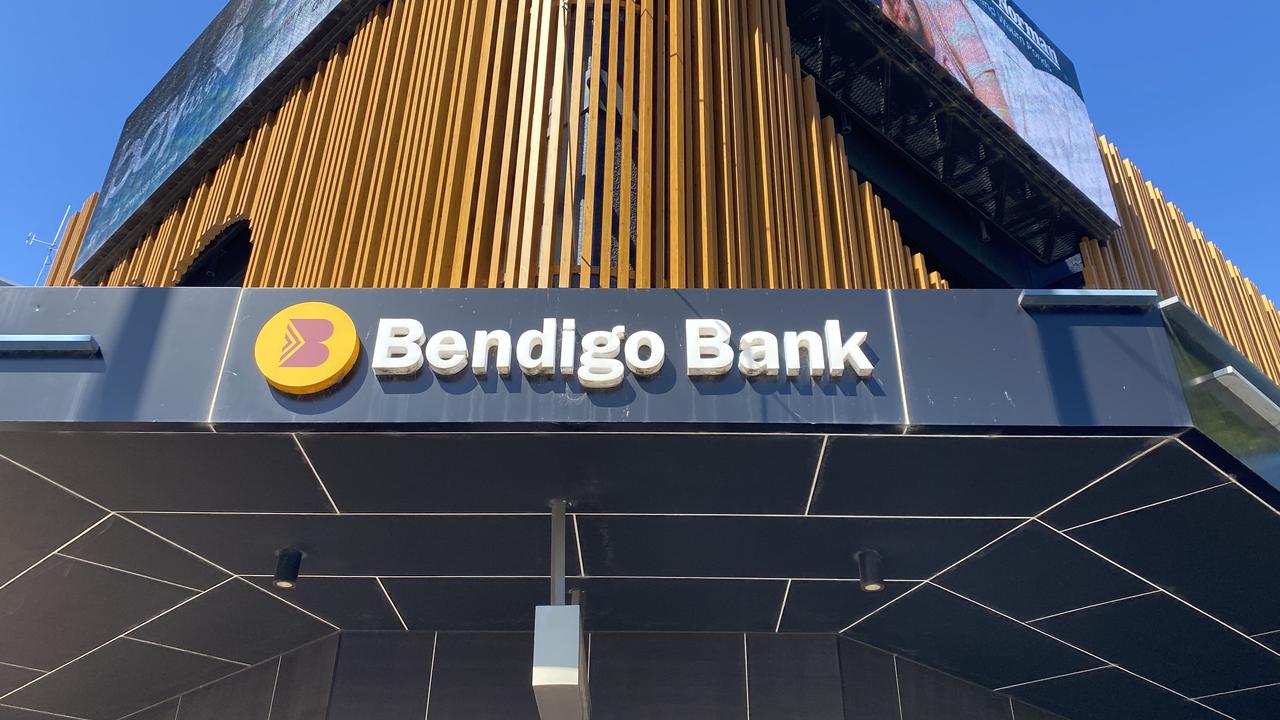Rising unemployment rate changes everything
From working from home to the pace of wage rises, this time a lift in jobless numbers will be felt more broadly.

Business
Don't miss out on the headlines from Business. Followed categories will be added to My News.
From working from home to any wage rises, a lift in unemployment will be felt through all parts of the economy.
With the Reserve Bank’s rapid round of interest rate hikes starting to bite into growth, unemployment will inevitably follow, rising through the rest of this year and into next.
The RBA is tipping unemployment to hit 4 per cent by the end of this year, pushing up to 4.5 per cent within two years. It is still low by historical measures in Australia, but after recently touching a wafer-thin unemployment rate of just 3.4 per cent, a higher number is going to represent a wake-up call. This time the impact might be felt more widely than a normal slowing cycle.
What looks to be the first cracks in the jobs market have emerged with a surprise rise in unemployment, to 3.7 per cent, and fall in employment in the ABS April labour force data.
While it is drifting up, Australia’s labour market is still exceptionally tight in some areas.
A labour shortage in WA has meant that Beach Energy was unable to put a figure on a cost and timing blowout on its Waitsia gas plant. In some cases Beach has been flying technicians in from interstate.
Other companies have called out shortages in recent weeks from Aurizon (train drivers, electricians), Integral Diagnostics (radiologists), Regis Healthcare (nurses) and Wesfarmers (technology and construction).
More than a dozen company CEOs called out labour supply issues at this month’s Macquarie Equities conference. This will ease over the next six months.
Like inflation, rising unemployment changes behaviour of even those not directly impacted. It dampens consumer spending on the fear of “I could be next”.
Workers trade in wage rises for job security. Combined with increasing levels of immigration, wages growth is likely to peak in the June quarter, then it will slow sharply from there.
City-based bosses too can lean harder on work-from-home staff to start attending the office more days during the week.
When the jobs market has been exceptionally tight and there are more vacancies than people, bosses have been reluctant to force the point of getting back into the office. This will change as worker desire for job certainty overtakes flexibility.
Unemployment is THE figure that bank bosses follow, given this is the most accurate lead indicator of lending losses or mortgage stress. When everyone has a job and the cashflow keeps coming, they keep paying the mortgage. For the past two years bank arrears have been tracking at record lows and have barely budged even as interest rates have surged. This will only hold as long as unemployment stays low.
National Australia Bank chief executive Ross McEwan says Australia is likely to avoid falling into a recession, but people will certainly be feeling as though things are getting a lot harder. His bank is tipping the RBA to push through another one or two cash rate hikes to curb inflation, which is running at three-decade highs.
“It’s starting to squeeze but that is unfortunately, the impact of (the RBA) having to take action against inflation,” he told ABC radio. McEwan says households are adjusting to higher interest rates. “It’s not easy though. And we’re very well aware of that.”
Banks aren’t taking any chances, in recent months they’ve been putting aside hundreds of millions of dollars to protect against “economic losses” – that is lending losses yet to emerge but still likely to bubble up as growth slows. For bank stability it’s far better to be prepared for the hit rather than after the event.
Branches will close
Two decades ago, regional lender Bendigo Bank hit on a competitive point of difference from the big four and much of this was built around old-fashioned branch banking.
Bendigo pioneered the community banking model that allowed it to cheaply expand its national footprint from its Victorian base and in the process getting access to billions in low cost deposits, well beyond what would have been the reach of a small bank.
But now it is clear that branch banking is approaching its use by date, with most services as far away as your mobile phone.

A Senate committee examining hundreds of bank branch closures across regional Australia, was certainly born out of frustration, but has been short on solutions apart from the cash-strapped Australia Post being paid by the majors and even regional banks to offer basic banking services.
In the era where cash can be transferred cheaply and instantly from wherever you are, bank branches are starting to feel like personal cheques.
It’s a frustration to be sure and unless banks are slapped with a universal service obligation that comes at a high cost to either taxpayers, shareholders or customers, closures of lightly used bank branches will continue. The biggest impact will be on small businesses in regional areas that still have to carry cash but most personal customers barely walk into a branch.
Telstra is paid more than $230m annually under a universal service guarantee that all Australian homes and businesses can have access to both broadband and voice services, regardless of their location. This is topped up by the $380m mobile black spot program.
All the major banks had been quietly closing branches in both the cities and regional Australia before Covid-19 hit, but the pandemic sped up the process, with banks given more flexibility to reduce hours open.
Westpac is now in the process of combining 100 of its St George and Bank of Melbourne branded branches with its Westpac branch to help it achieve company-wide savings targets. Westpac’s own technology shortfalls had been the reason this hadn’t happened earlier, but now getting all customers on the same banking platform.
In the last financial year, Bendigo closed 19 branches, the majority of these were community branches.
To give a sense of how Community Bank branches have underpinned Bendigo’s physical expansion of around 430 branches, Bendigo operates today Community Bank branches represent 300 of this. Around half of Bendigo’s branch footprint is in regional and remote areas.

Under the model, the local community funds the cost of establishing the branch and staff and Bendigo provides the underlying infrastructure. Revenue from the branch is split between the bank and the branch shareholders.
Appearing at the regional affairs Senate committee where hearings were being held in Ingham, Queensland, Bendigo’s consumer banking boss Richard Fennell said his bank remains committed to regional Australia, but it was clear how banking was being used was changing. Some branches were “seldemly” used,
“The cost of maintaining a significant bricks and mortar presence is substantial. And for this reason, we often need to assess the viability of our branches,” he told the committee.
“The bank’s distribution strategy remains commercially driven by our customers’ needs and preferences. When these change, so must our approach to delivering our banking services,”
“Whether we like it or not, the clear and growing preference of the vast majority of our customers is to transact online. And we must be able to respond to those needs with competitive digital offerings”.
“As a result, we must adapt and adjust our strategy to suit the changing times. This includes making the necessary investments in technology that supports our online offerings and protects our customers using digital services”.
Bendigo is making strides on this front. Its online-only neobank Up is less than four years old and so far has gained more than 600,000 customers. This two-thirds of the entire customer numbers of the 25-year-old Community Bank network. It is arguable that some of Bendigo’s younger customers are signing on to Up versus the local Bendigo branch.

Suncorp Bank chief executive Clive van Horen says digital adoption has seen significant changes in the way customers engage with banks. Even five years ago, customers had to either phone Suncorp or walk into a branch to open a bank account. Currently, over 80 per cent of Suncorp’s accounts are opened online. At the same time, 75 per cent of the home loans sold by Suncorp are arranged through a mortgage broker, allowing the regional lender to access markets where it doesn’t have a physical presence.
Also appearing at the committee hearing in Ingham, Van Horen offered some sobering figures. Of the 16 bank branches Suncorp closed in regional Australia in the last five years, the average number of customers visiting those branches had dropped to only 41 per day. In four of those branches, there were only 10 customers per day coming through the doors. Suncorp has more than 360,000 people using its
“We have to balance where we invest across our branch network, our call centres, mobile and digital platforms as well as our ability to continue fighting fraud and cyber crime while staying competitive with larger banks when it comes to innovation and addressing regulatory change”.
johnstone@theaustralian.com.au
More Coverage
Originally published as Rising unemployment rate changes everything









